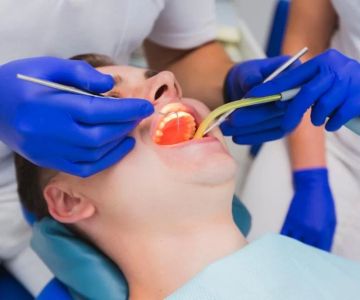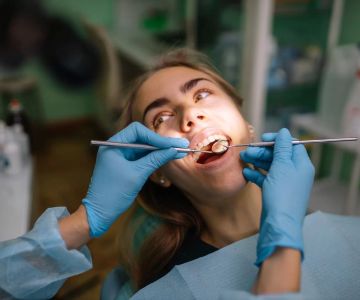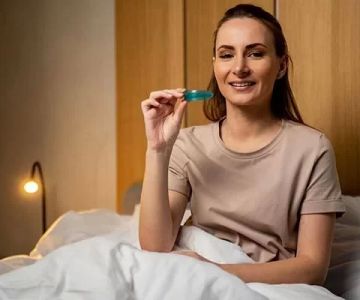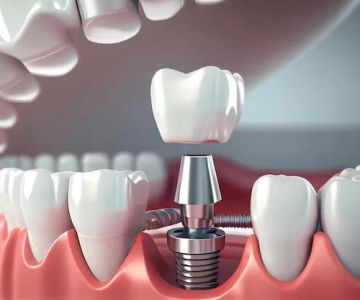How to Treat Baby Bottle Tooth Decay: Effective Solutions for Your Infant's Smile
- Understanding Baby Bottle Tooth Decay
- What Causes Bottle Tooth Decay?
- Treatment Options for Baby Bottle Tooth Decay
- How to Prevent Baby Bottle Tooth Decay
- Real-Life Experiences: Tackling Bottle Tooth Decay
Understanding Baby Bottle Tooth Decay
Baby bottle tooth decay, also known as early childhood cavities, is a condition where an infant or toddler’s teeth develop cavities due to prolonged exposure to sugary liquids. This often happens when a baby is put to bed with a bottle filled with milk, juice, or other sugary liquids that coat the teeth and lead to decay. The condition primarily affects the upper front teeth, but it can spread to other teeth if not treated.
Many parents are unaware of this condition, as it often goes unnoticed until significant damage has occurred. Understanding the causes and recognizing the early signs of bottle tooth decay is essential for treating and preventing it effectively.
What Causes Bottle Tooth Decay?
The primary cause of bottle tooth decay is the frequent and prolonged exposure of a baby’s teeth to sugary liquids. When babies suck on bottles containing milk, formula, or juice, the sugar in these liquids forms a sticky film on the teeth. If not cleaned off, this sugar can interact with bacteria in the mouth to form acids, which erode the enamel and lead to cavities.
In particular, allowing a baby to fall asleep with a bottle in their mouth is a significant risk factor. The constant exposure to sugary liquids during sleep prevents the natural cleaning action of saliva, which would otherwise help to wash away food particles and bacteria. Over time, this leads to the formation of cavities.
Other factors, such as improper oral hygiene or a lack of regular dental checkups, can also contribute to the development of baby bottle tooth decay. The earlier the signs of tooth decay are spotted, the more likely it is that effective treatment can prevent further damage.
Treatment Options for Baby Bottle Tooth Decay
If you suspect your baby is suffering from bottle tooth decay, it is crucial to consult a pediatric dentist as soon as possible. Early intervention can help to prevent more severe complications. Treatment will vary depending on the extent of the decay, but options typically include:
- Fluoride Treatment: In some cases, a pediatric dentist may apply fluoride to the affected teeth to help remineralize the enamel and prevent further decay.
- Fillings: If the decay is more advanced, a dentist may recommend filling cavities to restore the teeth’ structure and function.
- Extraction: In severe cases, when the tooth is beyond repair, the dentist may recommend extracting the damaged tooth to prevent the infection from spreading to other areas of the mouth.
- Restorative Care: For severely decayed teeth, the dentist might recommend restorative treatments like crowns or dental bonding to protect the remaining healthy tooth structure.
It’s important to address the issue early, as untreated tooth decay can lead to infections, pain, and difficulty eating or speaking for your child. Visiting a dentist regularly ensures that any signs of decay can be treated promptly, preventing further damage.
How to Prevent Baby Bottle Tooth Decay
Preventing bottle tooth decay is easier than treating it, and there are several steps you can take to ensure your baby’s teeth remain healthy:
- Avoid Sugary Drinks in Bottles: The best way to prevent tooth decay is to avoid putting sugary liquids like juice or milk in your baby’s bottle, especially at bedtime. If your child is used to drinking from a bottle, gradually switch to a cup once they are old enough (around 12-18 months).
- Clean Your Baby’s Teeth: After feeding, wipe your baby’s gums and teeth with a clean, damp cloth or a soft infant toothbrush to remove any food particles. As soon as their first teeth appear, brush them with a fluoride-free toothpaste designed for babies.
- Wean Off Bottles Gradually: Gradually transition your baby from bottle feeding to cup drinking, especially at night. Encourage them to drink water before bed if they need something to soothe them.
- Regular Dental Visits: Start taking your baby to the dentist as soon as their first tooth erupts, usually by their first birthday. Regular checkups help identify potential problems early and ensure your baby’s oral health is on track.
By adopting these habits, you can significantly reduce the risk of bottle tooth decay and ensure your child’s teeth develop healthily.
Real-Life Experiences: Tackling Bottle Tooth Decay
Many parents have shared their experiences with baby bottle tooth decay, and these stories offer valuable insights into how the condition can be managed. For example, Sarah, a mother of two, noticed her daughter’s front teeth were discolored and had developed tiny holes. She took her to the dentist, where they diagnosed early-stage bottle tooth decay. Sarah was advised to switch from milk to water in the bottle before bedtime and to begin cleaning her baby’s teeth regularly. With the right treatment and preventative care, Sarah was able to reverse the damage and prevent further decay.
Similarly, David and Emily, parents of a one-year-old, caught the signs of bottle tooth decay early when they noticed their baby’s gums were inflamed. After visiting their pediatric dentist, they were guided on the importance of weaning off the bottle and brushing their baby’s teeth. Though the process was difficult, they were happy to see their baby’s smile restored after a few months of diligent care.
These real-life examples highlight the importance of early detection and consistent oral care. By taking proactive steps, many parents can successfully treat and prevent bottle tooth decay, ensuring their baby’s teeth stay healthy for years to come.
Protect Your Baby’s Smile with the Right Care
Preventing and treating baby bottle tooth decay is an essential part of your child’s oral health. With the right care, you can protect your infant’s smile and set them on the path to lifelong dental health. For more tips on baby oral care, or to learn about effective products to help treat and prevent tooth decay, visit Dentistry Toothtruth.







 Dental Solutions Market Street4.0 (576 review)
Dental Solutions Market Street4.0 (576 review) Mesa Valley Modern Dentistry4.0 (344 review)
Mesa Valley Modern Dentistry4.0 (344 review) Washington Square Dental4.0 (121 review)
Washington Square Dental4.0 (121 review) Gregg W Jepson DMD5.0 (7 review)
Gregg W Jepson DMD5.0 (7 review) Growing Smiles of Voorhees4.0 (2464 review)
Growing Smiles of Voorhees4.0 (2464 review) Metropolitan Endodontics4.0 (78 review)
Metropolitan Endodontics4.0 (78 review) The Importance of Oral Health Education During Pregnancy for a Healthy Pregnancy
The Importance of Oral Health Education During Pregnancy for a Healthy Pregnancy Best Tips for Brushing Your Teeth Properly for Healthy Gums: Essential Techniques for Oral Health
Best Tips for Brushing Your Teeth Properly for Healthy Gums: Essential Techniques for Oral Health Why Skipping Dental Checkups Can Lead to Bigger Oral Health Problems
Why Skipping Dental Checkups Can Lead to Bigger Oral Health Problems Advantages of Porcelain Dental Restorations
Advantages of Porcelain Dental Restorations How Can Diabetes Cause Tooth and Gum Problems? Preventing and Managing Oral Health Issues
How Can Diabetes Cause Tooth and Gum Problems? Preventing and Managing Oral Health Issues Healthy Habits for Promoting Good Oral Health and Hygiene: Tips for a Healthy Smile
Healthy Habits for Promoting Good Oral Health and Hygiene: Tips for a Healthy Smile